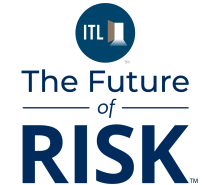Adverse selection in commercial insurance is a burden on all stakeholders. It drives higher average premiums and lower availability of insurance for businesses. Underwriters are saddled with time-intensive and manual online research. Without the right sources, they may struggle to bring relevant insights about their policyholders' businesses to light.
With a world of information at their fingertips, how do insurers filter through the noise to source truly useful insights that give them a reliable outlook about a company's risk?
Underwriters may hesitate to adopt new risk assessment tools because they don't want to overprocess their workflows or overburden themselves with more information. However, the most beneficial risk assessment technology doesn't just pump out more information; it focuses on data that fills the gaps and helps insurers make decisions.
Don't Suffer From More Data, Benefit From Fewer Decisions
Insurers need better data to better evaluate risk. But better data does not necessarily mean more data. Some underwriting engines may offer the entirety of the internet on a platter but not pick out the seeds and bones by proofing the outputs. Having acres of bad data can be much worse than having too little data.
Many seasoned underwriters burn a lot of time evaluating businesses because they don't trust the data they can access; outdated online business listings and quick on-site visits only scratch the surface of the true nature of a business, particularly as the nature of companies continues to evolve in complexity. For example, traditional underwriting methods may find it extremely difficult to distinguish between a landscaper that offers tree trimming services and one that doesn't. In contrast, a more modern underwriting approach that flags when a business offers new products or services can keep pace with the shifting currents of commercial risk.
Insurers can also use modern data tools to achieve greater clarity about like businesses through detailed comparisons to better understand their risk differential, harnessing a host of online insights to look through a macro lens at how a business compares with its peers within their category or location. Not every Starbucks location has the same risk propensity, so having this precise and contextual data can inform better decision-making.
Predicting Tomorrow's Risk Means Better Understanding Today's Risk
Underwriters need an accurate, real-time view of diverse data points like business classifications, operations, performance and customer feedback to confidently write policies. The more comprehensive their view of current risk is, the better prepared they are to predict future business risk.
Imagine that a customer leaves a review that a restaurant's floors are slippery. Although that business might not have an open claim yet, that hazard is a strong indicator that an injury claim lies just over the horizon and must be a critical consideration when evaluating its risk. Risk management technology that brings filterable predictive scores and indexes to underwriters' fingertips is essential for future-proofing their policies.
Although accuracy and foresight are critical for underwriting intelligently, the speed of these insights is equally important.
Don't Sacrifice Time for Accuracy
Reliability and speed are the cornerstones of great data, so having a data suite that is cleansed, categorized and standardized for rapid incorporation is essential. If the underwriting technology insurers invest in is clunky or does not integrate with their current workflows, then it may add even more work for underwriters, and adoption will likely falter.
Underwriters who spend too much time evaluating and verifying risk attributes will often miss out on optimal policies and find it more difficult to justify niche markets, aggravating adverse selection.
Combat Adverse Selection With Credible, Curated Data
There is a great deal of pressure on underwriters to efficiently quantify complex risks in less and less time, but that only leaves teams more vulnerable to overlooking significant risks, contributing to their growing adverse selection problem. Rather than shying away from opaque markets or opportunities with historically smaller margins, insurers that harness credible, curated data sets will be better positioned to combat adverse selection and adapt to the continually shifting market conditions.
By harnessing reliable information and embracing automation, underwriters can offload the tedious, time-consuming research tasks and focus more on assembling the complete picture of a business before binding a policy. These advancements allow carriers to get the first pick on the best risks and foster better relationships with their insureds while avoiding unnecessary uncertainty.







